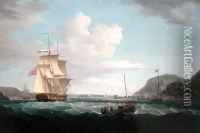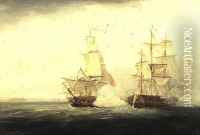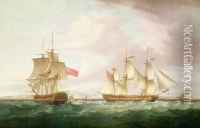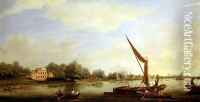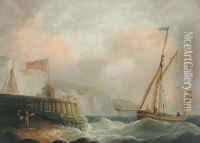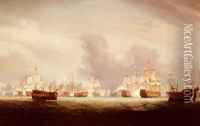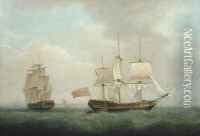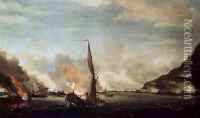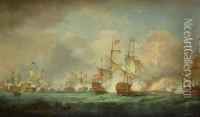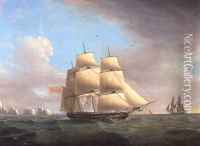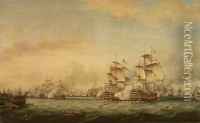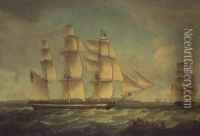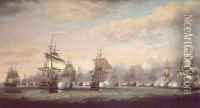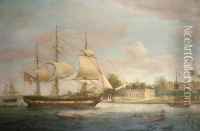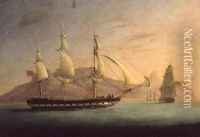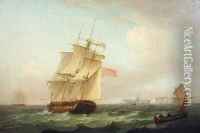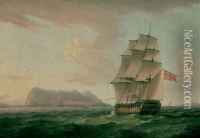Thomas Whitcombe Paintings
Thomas Whitcombe was a British maritime painter whose prolific career spanned the late 18th and early 19th centuries. He was born around 1760, but there is little definitive information about his early life and training. Whitcombe is best known for his depictions of naval battles and ship portraits, particularly those related to the Napoleonic Wars and the Royal Navy.
Whitcombe's maritime scenes are characterized by their dramatic intensity, attention to detail, and dynamic compositions. He often captured the power and tumult of the sea, and his works conveyed a strong sense of movement and action. His paintings were highly sought after during his lifetime, especially by naval officers and those with a vested interest in maritime affairs.
Despite the fame he achieved for his naval scenes, very little is known about Whitcombe's personal life. He lived and worked in London for most of his career, and his works were regularly exhibited at the Royal Academy from 1783 until 1824, the year of his death. Unlike many of his contemporaries, Whitcombe did not leave behind personal papers or a significant body of correspondence, which has made it difficult for historians to construct a detailed biography.
During his career, Whitcombe produced a significant number of paintings, many of which depicted specific historical events and battles, such as the Glorious First of June, the Battle of Camperdown, and the Battle of Trafalgar. His paintings were not only artistically acclaimed but also served as important historical records of naval warfare.
Whitcombe's work remains popular among collectors of maritime art, and his paintings can be found in many notable collections, including the National Maritime Museum in London. Despite the scarcity of biographical details, his legacy as a leading maritime artist of his time is well established. Whitcombe's contributions to British art were part of a broader movement of maritime painting that flourished during the period of Britain's naval dominance. He died around 1824, and his exact date of death, much like many details of his life, remains uncertain.
